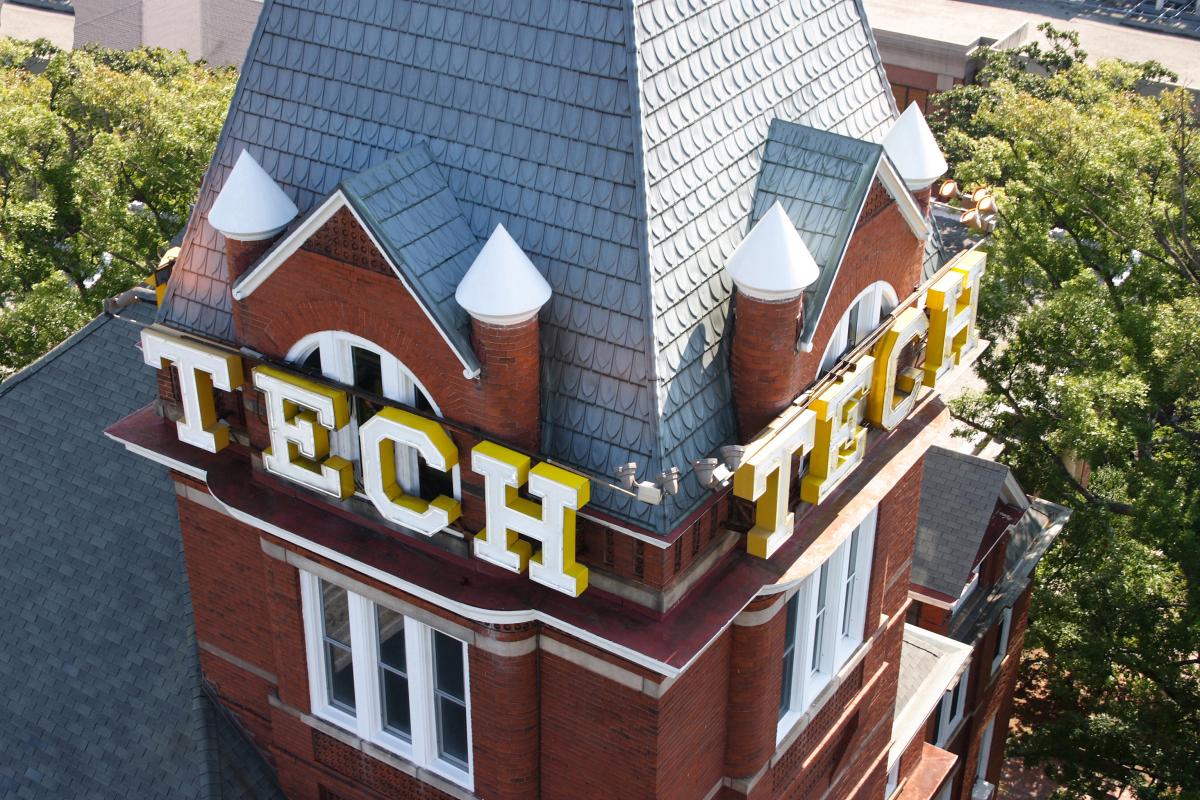
“The paper competition provides a unique opportunity for SAIC to recognize exceptional research at a great university, while at the same time promoting SAIC and its commitment to technical excellence to the students and faculty,” said SAIC Vice President Jad Batteh, who serves as the competition event director. “The outstanding response we get every year, in terms of the number and quality of the papers submitted, reflects the high regard that Georgia Tech students and faculty have for winning an SAIC award.”
Nearly 100 entries were received for this year’s competition. One winning paper described a novel approach to the design of synthetic materials that can be modified and controlled at the cell level through external stimuli. This development of “smart” biomimetic materials has wide application in the biomedical, biosensing, and biotechnology areas. Biomimetics is the study of the structure and function of biological systems as models for the design and engineering of materials and machines.
“Georgia Tech is a leading engineering university, and the student paper competition helps SAIC to maintain our leadership position by tapping into great ideas and talent,” said Mike Macedonia, director of the SAIC-Georgia Tech strategic alliance initiative.
Another paper topic covered the flow of gossip through workplace email, arguing that gossip is common at all levels of organizational hierarchy, with people most likely to gossip with their peers, and that negative gossip is 2.7 times more frequent than positive gossip. A third focused on the pursuit of weapons of mass destruction (WMD) by terrorists, challenging traditional thoughts on the relationship between WMD terrorism and state support. It also addressed improved understanding of terrorist organizations’ WMD motivations and capabilities.
Banquet Honors Award Winners
During the event, five first prize awards of $1,000, five second prize awards of $500 and one award for best poster for $500 were handed out to the student authors. Papers were evaluated by SAIC scientists and Georgia Tech faculty based on originality of the work, significance of the results, and effectiveness of the presentation.
“I was impressed with the breadth and quality of the papers and the students’ enthusiasm for their research. Hearing them discuss their work was the highlight of the event for me,” SAIC Group President Tom Baybrook said. “I also was pleased and honored to be part of the long tradition of cooperation between Georgia Tech and SAIC.”
One of the first-place papers came from mechanical engineering graduate student Nathan Mlot, who studied how fire ants link their bodies together to build waterproof rafts to survive flooding, a process analogous to the weaving of a waterproof fabric. “I was honored to be a finalist in my first SAIC paper and poster competition,” said Mlot, who also won the best poster award. “It was exciting to explain my research in poster format to so many people who were eager to hear about what I do. I aimed to show how the floating fire ant raft is a model system for studying cooperative multi-agent swarm systems. Everyone who visited my poster showed a lot of interest in my work, which I found encouraging and a great motivation to continue further research. The whole event was very well organized, and the SAIC employees I met were professional yet highly personable.”
Spirit of Collaboration on Display
The successful awards banquet was just another example of how SAIC and Georgia Tech have built a solid relationship over the years. “The relationship between SAIC and Georgia Tech has all the elements of an ideal win-win association: student recruitment for SAIC, financial support for our students, and research collaboration,” Dean of Engineering Gary May said. “We look forward to our ongoing interaction in the future.”
That visibility and interaction with SAIC continues to prove valuable for many of the students, who in planning for their careers, understand SAIC’s dedication to research and innovation. “I was honored to receive an award, but it was still more gratifying to see the interest that SAIC is taking in the students’ work,” said bioengineering Ph.D. candidate and award winner Julia Henkel, who wrote about spatiotemporal mechanical variations. “I hope the SAIC-Georgia Tech relationship continues to promote good relationships between Georgia Tech and industry.”
